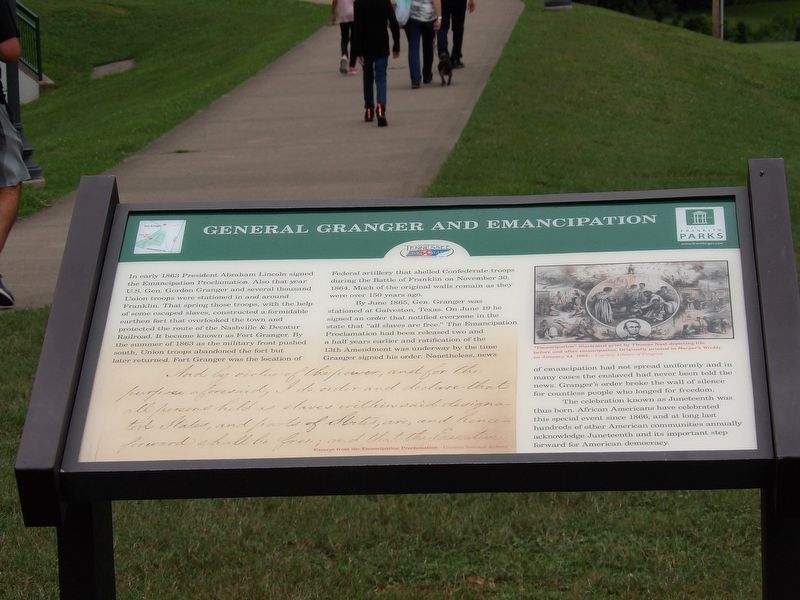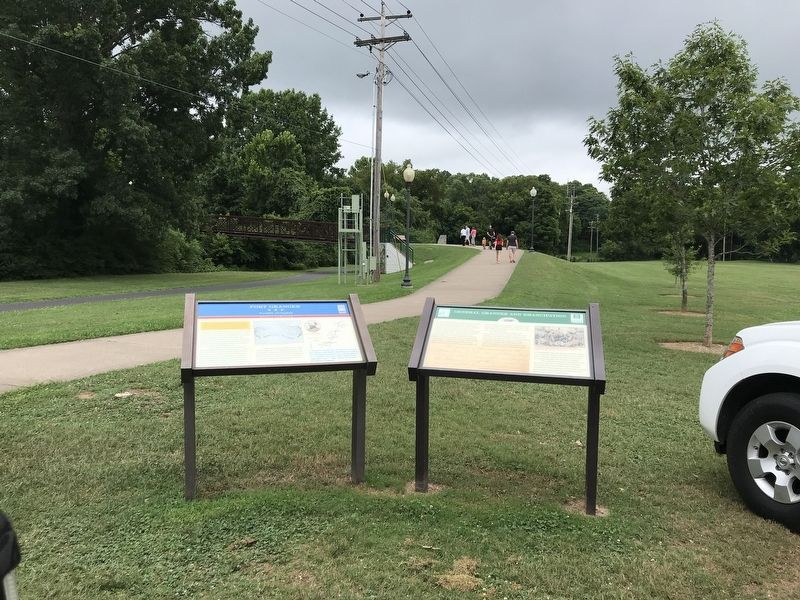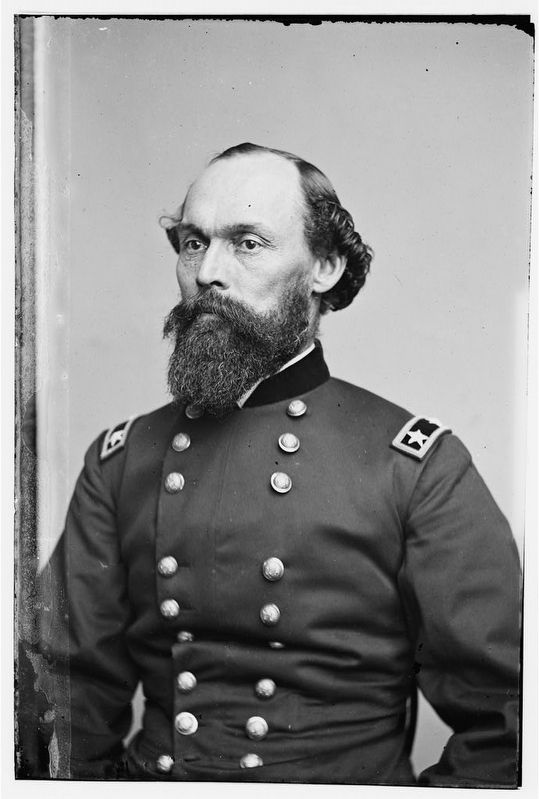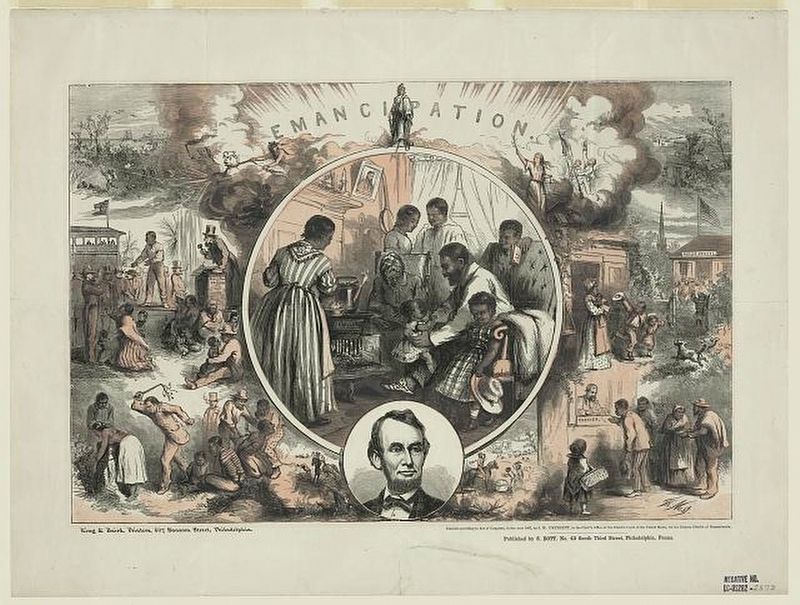Franklin in Williamson County, Tennessee — The American South (East South Central)
General Granger and Emancipation
Inscription.
In early 1863 President Abraham Lincoln signed the Emancipation Proclamation. Also that year U.S. Gen. Gordon Granger and several thousand Union troops were stationed in and around Franklin. That spring those troops, with the help of some escaped slaves, constructed a formidable earthen fort that overlooked the town and protected the route of the Nashville & Decatur Railroad. It became known as Fort Granger. By the summer of 1863 as the military front pushed south, Union troops abandoned the fort but later returned. Fort Granger was the location of Federal artillery that shelled Confederate troops during the Battle of Franklin on November 30, 1864. Much of the original walls remain as they were over 150 years ago.
By June 1865, Gen. Granger was stationed at Galveston, Texas. On June 19 he signed an order that notified everyone in the state that “all slaves are free.” The Emancipation Proclamation had been released two and a half years earlier and ratification of the 13th Amendment was underway by the time Granger signed his order. Nonetheless, news of emancipation had not spread uniformly and in many cases the enslaved had never been told the news. Granger's order broke the wall of silence for countless people who longed for freedom.
The celebration known as Juneteenth was thus born. African Americans have celebrated this special event since 1866, and at long last hundreds of other American communities annually acknowledge Juneteenth and its important step forward for American democracy.
Captions
(bottom left) Excerpt from the Emancipation Proclamation Courtesy National Archives
(top right) “Emancipation” illustrated print by Thomas Nast depicting life before and after emancipation. Originally printed in Harper's Weekly on January 24, 1863. Courtesy Library of Congress
Erected by Tennessee Civil War National Heritage Area • City of Franklin, TN Parks Department.
Topics. This historical marker is listed in these topic lists: Abolition & Underground RR • African Americans • Civil Rights • War, US Civil. A significant historical date for this entry is June 19, 1865.
Location. 35° 55.321′ N, 86° 51.742′ W. Marker is in Franklin, Tennessee, in Williamson County. Marker can be reached from Murfreesboro Road (Tennessee Route 96), on the right when traveling west. Marker is in the Fort Granger section of Pinkerton Park. Touch for map. Marker is at or near this postal address: 405 Murfreesboro Road, Franklin TN 37064, United States of America. Touch for directions.
Other nearby markers. At least 8 other markers are within walking distance of this marker. Fort Granger (here, next to this marker); a different marker also named Fort Granger (here,
next to this marker); Ewingville / Alexander Ewing (about 600 feet away, measured in a direct line); Franklin Railroad Depot (about 800 feet away); The Rainey House (approx. 0.2 miles away); Railroad Section Foreman's House / Pioneers' Corner (approx. 0.2 miles away); a different marker also named Fort Granger (approx. ¼ mile away); Andrew C. Vaughn House (approx. ¼ mile away). Touch for a list and map of all markers in Franklin.
Also see . . . The Historical Legacy of Juneteenth. By the National Museum of African American History & Culture, part of the Smithsonian Institution. (Submitted on July 17, 2021, by Duane and Tracy Marsteller of Murfreesboro, Tennessee.)
Credits. This page was last revised on July 17, 2021. It was originally submitted on July 17, 2021, by Duane and Tracy Marsteller of Murfreesboro, Tennessee. This page has been viewed 180 times since then and 10 times this year. Photos: 1, 2, 3, 4. submitted on July 17, 2021, by Duane and Tracy Marsteller of Murfreesboro, Tennessee.



